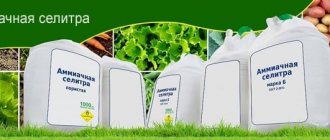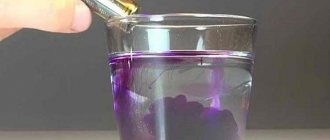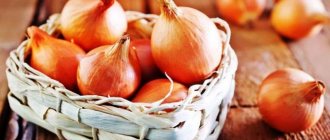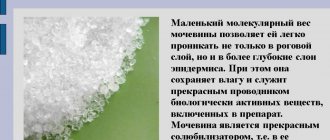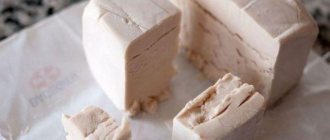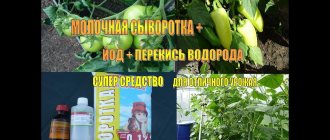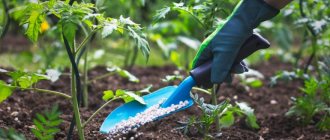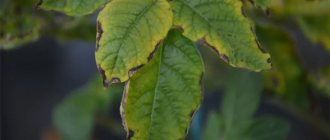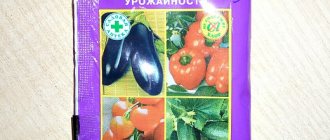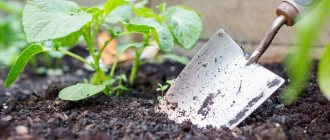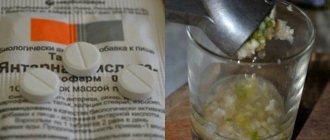Category: Mineral fertilizers Reading time: 8 min · Views: 12,051
Potassium nitrate (potassium nitrate) is a popular agricultural fertilizer. Some sources call potassium nitrate Indian. The formula of potassium nitrate is KNO3, where the main elements are nitrogen and potassium. Their combination is very effective, since nitrogen accelerates the development of garden and vegetable crops, and potassium helps to increase the suction power of roots.
After such feeding, the plant begins to actively absorb nutrients from the soil. In addition, cellular respiration increases, because potassium nitrate is a catalyst for some biochemical reactions. Sufficient saturation of plant cells with oxygen helps strengthen the immune system and increase defenses. And the less the plants are sick, the greater the harvest will be.
Nitrate is an effective fertilizer, which is why it has been used in agriculture for more than 30 years. Typically, potassium nitrate is added as an additional nutrition to plants for which chlorine is harmful. Potassium nitrate is excellent for fertilizing strawberries, blueberries, raspberries, grapes, beets, carrots and tobacco.
How to properly use potassium nitrate (potassium nitrate) in the garden
Potassium nitrate is one of the fertilizers that is popular for its qualities and capabilities.
Old-timers claim that in addition to its effectiveness in achieving high yields, it becomes the main source of potassium for the soil. Suitable for all crops. Helps normalize plant growth. In addition to potassium, nitrogen is present, which makes it possible to use saltpeter as a fertilizer complex. It remains to study further the composition and instructions for preparing the liquid for feeding.
Dosage and application rates
It is irrational to apply potassium nitrate in dry form, since the aqueous solution acts much faster and much more efficiently. Only root and tuber crops are fertilized with granules at the very beginning of the growing season. The powder is applied during spring tillage at the rate of 20 g per 1 m². To feed other vegetable and garden crops, prepare a working solution. Due to their high hygroscopicity, the granules dissolve easily. For different types of crops, their own proportions for preparing the solution are recommended:
| Culture | Root feeding | Foliar feeding | ||
| Dosage, g/l water | Application rate, l | Dosage, g/l water | Application rate, l | |
| Fruit trees | 2,5 | 10-20 per 1 mature tree | 15-20 | 2 for young; 5-8 per mature tree |
| Ornamental and berry bushes | 1-2 | 10-20 per bush | 15-20 | 1.5-2 per bush |
| Vegetable and floral-decorative | 1-1,5 | 4-10 per 1 m² | 15-20 | 1-1.5 per 10 m² |
| Indoor (potted) flower and decorative | 1-2 | Before the earthen coma is moistened | 15-20 | Before wetting the leaf surface |
Description and chemical composition
Potassium nitrate or potassium nitrate has the formula KNO3. The chemical formula shows the presence of two main components: potassium and nitrogen. When the ingredients are combined according to the calculated formula, a fertilizer is obtained that gives:
- accelerated development of cultures;
- increasing root strength;
- strengthening the root part;
- increasing plant immunity;
- adding nutrients to the soil.
The use of potassium-nitrogen composition is allowed as a top dressing due to the availability of nutrients. And also as an independent fertilizer to increase the protective functions of the plant.
Thanks to good immunity, the plant not only grows quickly, but also resists garden diseases and strengthens its resistance to parasitic insects. As a result of the effect of nitrate solution, we get: high yield.
Making your own formula is not recommended to avoid an overdose of ingredients. Suitable as fertilizer for:
- tobacco and beets;
- carrots and grapes;
- raspberries and strawberries.
To summarize, it is ideal for plants that cannot tolerate chlorine and its effects have an extremely negative effect on their development. Appearance: powdery or in the form of crystals. White color. There is no smell. Other names:
- potassium nitrate;
- potassium nitrate;
- Indian saltpeter.
Benefits of fertilizing
When plants are deficient in nitrogen, the entire growth cycle is disrupted. The leaves have a light shade, sometimes turn yellow and fall off. The shoots look thin and weak. Flowering will be sparse, it is possible that most of the buds will fall off and summer residents will receive a harvest only next year, when the soil has accumulated more nutrients. Nitrogen takes part in the synthesis of protein compounds.
Potassium in the composition prepares the plant for flowering and fruiting. It promotes the synthesis and accumulation of sugar in vegetables and fruits, which changes the taste for the better. Such products are stored longer, so farmers often use potassium nitrate to ensure transportation without loss of quality.
Potassium nitrate can be used to feed trees in the garden in the spring, since it is inexpensive and the consumption is quite high.
Two-component fertilizers are a good help for novice gardeners, since you do not need to independently calculate fertilizing rates, as well as guess when it is best to apply each component. Beginners may have problems with the type of soil for which the potassium nitrate formula is not suitable.
The main advantage of using potassium nitrate is complex, one-time feeding. For people who do not permanently live in the country, this is convenient in terms of saving time.
Useful properties of the substance
Technical potassium nitrate is used from the moment the plant is planted in the soil. Suitable for literally any type of soil. Belongs to the class of universal fertilizers. It is a toxic substance, non-volatile, highly soluble.
It differs from most proposed fertilizer complexes, since it contains more potassium than nitrogen. The last ingredient is only in the amount necessary for minimal feeding. Allowed for use at a convenient time:
- during the growing season;
- during the formation of ovaries;
- after harvest.
Incredibly useful for crops that are planted in the garden or garden. Helps accelerate growth and enhance plant respiration. If saltpeter is used for winter plantings (garlic, strawberries, etc.), it enhances the frost resistance of the crop.
The use of potassium nitrate will improve the quality of the crop - video
How to use potassium nitrate
Potassium nitrate is used throughout all seasons. The first fertilizing is applied in the spring, immediately at the beginning of the growing season. Method of application: digging or plowing. After this, it is used for fertilizer, both root and basal.
.
In the first case, fertilizer is applied immediately under the root, in a circle near the trunk, in the hole for planting. The foliar method consists of spraying or simply wetting the foliage. The latter method is more effective, since it is through the surface of the leaf that better absorption occurs than through the roots. The most optimal use of potassium nitrate is a complex method that combines spraying and watering at the same time
.
To apply fertilizers outside the roots, a larger amount of substance is required, since evaporation occurs through the leaves. And also some of the fertilizer may simply be washed away by rain. During the growing season, fertilizing is applied 4 times, with an interval of 10 to 15 days. Note:
potassium nitrate can also be used in dry form.
It's even better for fertilizing root crops. For other crops, the liquid form is more effective. As for exceeding the amount of fertilizing, this is undesirable, as this will affect the fruits. They will contain an excess concentration of nitrates. Dosage:
• to prepare a solution for root fertilizer, use saltpeter in a volume of 15 to 25 g per 10 liters of clean water.;
• for spraying they make a high concentration, more than 25 grams for the same amount of water; • the last time fertilizing is applied three to four weeks before harvesting the fruits. Once again, it is worth saying that you should not exceed the number of feedings more than 4 per year, as this will increase the concentration of nitrates in the fruits
.
Sources
- https://ru.crystalls.info/%D0%9D%D0%B8%D1%82%D1%80%D0%B0%D1%82_%D0%BA%D0%B0%D0%BB%D0%B8 %D1%8F
- https://edelstarus.ru/udobreniya/35-kalijnaja-selitra-primenenie-udobrenija-v-ogorode.html
- https://podkormka.guru/vidy/nitrat-kaliya
- https://glav-dacha.ru/primenenie-kalievoy-selitry/
- https://osemenah.ru/udobreniya/260-kalievaja-selitra-universalnoe-udobrenie-dlja-ogoroda-sostav-svojstva-i-primenenie.html
- https://sad24.ru/bolezni/udobreniya/kalijnaya-selitra-osobennosti-primeneniya.html
- https://www.pesticidy.ru/active_compound/potassiumnitrate
- https://FertileLand.ru/mineralnye-udobreniya/kalievaya-selitra/
- https://dsregion.org/kalievaja-selitra/
- https://www.neboleem.net/nitrat-kalija.php
4 049
Pros and cons of fertilizer
The properties of potassium nitrate can affect plants and soil both positively and negatively. If diluted correctly, in accordance with the instructions for use, then there will be no problems.
It is worth considering that not all plants tolerate such feeding well. In such cases, you will have to replace the simple mineral fertilizer with a different type of fertilizer.
Positive aspects of use include:
- convenient to use;
- contains organic matter (potassium, nitrogen);
- provides the soil and plant with necessary substances.
Among the negative properties, a possible effect on soil properties (acidity, salinity) is noted. It is recommended to conduct compatibility tests before starting to use. Another disadvantage is the lack of microelements. There is also the effect of rapid leaching from the soil.
The hazard class is high, since due to toxicity it can burn mucous membranes and skin. It is additionally noted that saltpeter is explosive. Therefore, when diluting, spraying or other types of application, you should be extremely careful.
Proper storage conditions
When storing potassium nitrate, certain points must be taken into account:
- The packaging must be hermetically sealed and secure.
- Keep the product in a dry place, nitrate absorbs moisture, which can cause the fertilizer to cake.
- Potassium nitrate is an explosive substance, so keep it away from heating devices, as well as in the vicinity of flammable substances and alkaline compounds.
- It is unacceptable for the product to be exposed to direct rays of the sun or exposed to hot air currents.
- Store the product in a place protected from children and pets.
The working solution cannot be stored for a long time; potassium nitrate must be diluted immediately before use.
Potassium nitrate is an effective complex fertilizer that will revive vegetable plantings and ornamental plantings. It is important when using the product to strictly adhere to the dosages recommended by the manufacturer and observe safety precautions.
Instructions for use
Potassium nitrate is a substance that is suitable for the maximum number of plants and soil types. At the same time, any irrigation or application is prohibited for cabbage, zucchini, greens or radishes.
They are not used for potatoes for other reasons: low efficiency and effectiveness.
Helps enhance the taste of fruits. Increases the sugar content of the pulp of berries and fruits. There is an increase:
For drip irrigation, you can always purchase a small amount of saltpeter, since there are packages on sale from 1 kg and above. There is no standard packaging. For large processing areas, the filling bag can be up to 50 kg.
Dilution for spraying is carried out exclusively in water. Mixing saltpeter with organic matter (manure, compost, peat) is not allowed. Even with sawdust or straw.
The maximum allowed amount for application is 2 times per gardening period. If you increase the amount of application, the gardener risks contributing to the accumulation of nitrates.
Deadlines for depositing
Nitrate is applied not only during the period of planting seedlings in the ground. During fruiting, it will not hurt to carry out a set of procedures, as during flowering.
Article on the topic: Fertilizer for strawberries and wild strawberries FASCO - reviews, description
It is noted that after feeding, the fruits increase in size very quickly during the fruiting period.
In summer, they do not feed, but spray. The permissible quantity is up to 4 times. The last time is 28-30 days before harvest. This allows for long-term storage without damage or spoilage of the fruit.
Potassium nitrate should be added only according to a properly prepared recipe.
It is worth adding that even if the calculation of days was incorrect, the gardener is allowed to spray.
But at the same time, 10-14 days before harvesting, they pour water over it from a sprayer (hose). Carry out the rinsing procedure carefully so as not to knock the fruits off the branches.
Selection of dosage
Liquid potassium nitrate is most often applied at the root (trunk circle, hole). When foliar feeding, the dosage increases to increase the concentration of the solution. Do not worry about increasing the doses, as during watering the fertilizer will be washed off or evaporate.
For vegetables, potassium nitrate, flowers or trees, there are different doses for dilution:
Cooking method
Mineral fertilizer can be diluted for irrigation in water strictly according to the indicated dosages. Then water carefully, avoiding the green part of the plantings. How many times to apply depends solely on the type and condition of the soil.
When applying dry application, which is also possible, it is advisable to make a furrow for root crops. Pour the required amount of saltpeter into it. Calculation: 1 sq. m. = 5-7 g. Furrow depth is at least 3-5 cm.
Interesting fact! In summer, it is allowed to water the plants with a liquid based on nitrate. But this rule does not apply to lawns. When watering, there is a risk of significantly damaging the ornamental planting - burning it.
Feeding tomatoes and cucumbers
For tomatoes, saltpeter is an important complex for photosynthesis and strengthening the root part. The substance helps plants increase their yield by 2-3 times. Cucumbers and tomatoes are fed with liquid saltpeter.
The calculation is applied not for 10 liters, but for 15. Add 20-25 g of crystals. The indicated dosage is suitable for one-time watering or foliar feeding of tomatoes and cucumbers.
There is a way to use potassium nitrate for seedlings: 5-7 days before planting sprouts or after the appearance of several leaves. Also diluted at the rate of 15 liters.
Potassium nitrate is no less useful for peppers than for tomatoes. Shows excellent results: increased weight, juiciness. The pepper becomes more meaty. Use per period - no more than 2 times.
Potassium nitrate - use in the garden and in the garden, composition, formula, properties and reviews
Potassium nitrate (or potassium nitrate) is one of the most popular fertilizers used in the garden.
Flower growers also use it when feeding flowering plants in flower beds or indoor plants. This fertilizer contains potassium and nitrogen, which plants need for growth and flowering.
How, when and for which cultivated plants potassium nitrate should be used, how to dilute it correctly, its basic properties and much more will be discussed below.
Potassium nitrate - instructions for use for garden crops
Farmers and gardeners advise using potassium nitrate for specific vegetable crops:
- Cucumbers. Fertilize with a solution in the fruiting phase. The yield increases, but not the growth of greenery (stems and leaves).
- Tomatoes. They show watering the seedlings when they have 4 developed leaves. Also, repeated treatment with potassium nitrate is necessary a week before planting seed in the soil and during picking bushes.
Root application of the drug during the flowering phase of tomatoes will increase productivity by 40%.
- Roots. Potatoes, carrots, radishes and other crops are supplied with potassium nitrate components by adding crystals of the dry preparation directly into the ground (up to 50 g/sq.m.) during spring digging. Root crops are planted after a few days. Please note:
- Potatoes are processed during hilling, at the peak of potato tops development. It is recommended to mix this additive with phosphorus for better effect;
- cabbage and radishes are strengthened with potassium nitrate mixed with calcium;
- beets and carrots prefer the product without impurities.
Fertilizer potassium nitrate: properties and application
Potassium nitrate is an effective fertilizer that can be applied to any soil. It is suitable as a top dressing for all vegetable and fruit crops, for flowering plants in flower beds and for indoor plants.
Photo of the appearance of potassium nitrate
Nitrogen accelerates the growth and development of roots and vegetative mass; potassium improves the absorption of nutrients from the soil by the roots.
This type of nitrate also improves the respiration of foliage cells, as it serves as a catalyst for a number of biochemical processes occurring in plants. As a result, foliage cells are saturated with oxygen, which stimulates the immune system and increases plant resistance to major diseases and pest attacks.
As a result of the use of potassium nitrate, vegetable, flower and fruit crops become stronger and their productivity increases
.
Summer residents became convinced of the effectiveness of potassium nitrate several decades ago. And since then, this drug has been used as an additional fertilizer for those crops that are contraindicated in fertilizers that contain chlorine.
Photo instructions for using potassium nitrate
Potassium nitrate is used for application under the roots of plants and for foliar feeding.
Potassium nitrate is best suited for fertilizing the following crops:
- carrots;
- beets;
- tomatoes;
- cucumbers;
- raspberries;
- strawberries;
- blackberries;
- currants;
- grapes;
- colors;
- roses;
- ornamental and indoor plants.
Brief overview of potassium nitrate - video
Potassium nitrate improves the taste of fruits and berries, helping to saturate the pulp with sugars, as well as increasing the size of the fruit.
When applying this fertilizer during the period of fruit set, the shelf life of the future harvest will increase, as the keeping quality of the crop will improve.
Potassium nitrate fertilizer is also effective for fruit trees. Since potassium nitrate does not contain chlorine, it is used to fertilize those plants that do not accept this element (for example, grapes or tobacco).
Experts recommend adding potassium nitrate during the ripening period of cucumbers. The drug prevents the active growth of vegetative mass, while simultaneously activating the growth of fruits.
What is this remedy used for and how does it work?
Potassium nitrate is used to influence vegetation in the following directions:
- improves the absorption of substances by the root system, increases its branching;
- balances photosynthesis;
- accelerates growth;
- improves the quality of tissue structure;
- increases stress resistance, frost resistance and immunity;
- increases productivity (number and size of fruits);
- prevents cracking of fruits, increases their safety;
- improves the taste of fruit and berry products, promoting the accumulation of sugar (beets, grapes);
- prevents the development of bacteria and fungi.
Composition of potassium nitrate and fertilizer formula
Potassium nitrate is colorless and odorless crystals that are crushed in a factory and packaged for further sale.
The result is a white crystalline powder that can cake, but does not change its chemical properties.
This drug in any state is highly soluble in the following liquids:
- in water;
- in glycerin;
- in liquid ammonia;
- in hydrazine.
For summer residents and lovers of indoor plants, the main advantage of potassium nitrate is the ability to prepare an aqueous solution of this drug for application “under the root” or “over the leaf”.
The timing of feeding plants with potassium nitrate is at the beginning of flowering and during fruit set.
.
The effectiveness of the drug lies in the balanced composition of the main elements necessary for plants.
The chemical formula of potassium nitrate (potassium nitrate) is KNO3,
Moreover, the amount of nitrogen in this substance is minimal (about 13%), and potassium is almost 3 times greater (44%).
The hazard class of potassium nitrate according to GOST is third.
Thanks to this combination, potassium nitrate can be applied to plants during the period of flowering and active formation of ovaries, since it contains a large amount of potassium, which is necessary for abundant flowering and active formation of fruits. And nitrogen is quite enough to strengthen the immunity of plants. However, this quantity is not enough for the development of vegetative mass to the detriment of fruiting.
Potassium also helps to increase plant productivity and improves the taste of ripening fruits.
How and when to use potash fertilizers - video
What is it, composition and action
Potassium nitrate is a type of potassium fertilizer. They are colorless crystals of various structures of inorganic origin, highly soluble in water. Does not have a pronounced odor.
Melts at a temperature of 334-335 degrees. C, at an elevated melting point, the compound decomposes with the further release of oxygen. It is characterized by a slight degree of hygroscopicity - it absorbs water vapor from the air (caking over time).
According to toxicometric indicators, according to international standards, the fertilizer is practically non-toxic.
The main source of potassium nitrate is the mineral nitrocalite. In nature, large deposits are found in India and the countries of South and Southeast Asia. The fertilizer has a synonymous name - Indian saltpeter.
Chemical formula – KNO3. The active ingredients of potassium fertilizing are potassium + nitrogen + oxygen.
In potassium nitrate up to 45-46% potassium is the main nutritional element:
- regulates the full and uniform development of plants;
- optimizes water and protein metabolism;
- protects open ground crops from daily temperature changes, from heat in summer and hypothermia in the cold season;
- stimulates the germination of seed material;
- directly affects cell formation;
- prevents the proliferation of pathogenic environments.
Nitrogen (up to 13%) is a vital element for soil, garden and garden plants:
- is part of proteins (the basis of life of all cultures), nucleic acids (transmission of hereditary, varietal properties), chlorophyll (accumulation of solar energy during photosynthesis), enzyme catalysts of biochemical processes, vitamins, alkaloids and other compounds involved in metabolism;
- nitrogen nutrition stimulates protein synthesis and affects the intensity of growth processes;
- ensures the development of vegetative organs (enhances fruiting, increases productivity and the amount of protein in fruits and root crops).
Important : nitrogen is contained in the exact combination and form, which ensures immediate absorption of fertilizer by plants.
Potassium nitrate - how to dilute it correctly
This preparation can be applied to the soil either dry or diluted with water.
In the latter case, nutrients quickly reach the root system of cultivated plants and are absorbed faster, so summer residents more often use potassium nitrate in liquid form as fertilizer.
This drug is not mixed with organic matter - peat, rotted sawdust, compost, mullein, bird droppings or straw.
How to make potassium nitrate - video
Potassium nitrate should be diluted for application at the root in the following proportions
:
- for flowers and ornamental plants - dilute 15 g of the drug in a bucket of water;
for berry bushes (currants, blackberries, raspberries, blueberries) – 10 g per bucket of water;
- for fruit trees - 25 g per bucket of water.
This dosage of the drug is suitable for applying the solution under plants, in the tree trunk or in planting holes. For foliar feeding, it is better to use a more concentrated fertilizer, since it will evaporate or be washed off from the foliage when watering.
In this case, you need to dilute 25 g of potassium nitrate in a bucket of water.
Article on the topic: ANY-GREEN Spring - reviews, description
To spray ornamental crops, flowers and strawberries, use 700 ml per square area.
For berry bushes - up to 1 liter per square. When treating fruit trees, you need to calculate the amount of the drug depending on the volume of the crown - from 2 to 7 liters for each tree.
In total, no more than 4 plants are fertilized with potassium nitrate per season.
The last time it can be applied is approximately 25-27 days before harvesting the fruits.
Application procedure
Potassium nitrate as a fertilizer is suitable for many crops and soils. However, it is not allowed to use fertilizer in any form for zucchini, cabbage, radishes and herbs. This rule also applies to potatoes, but due to low efficiency. In general, a properly prepared preparation improves the taste characteristics of the fruit.
How not to miss the time to add potassium nitrate
Potassium fertilizer is applied both at the time of planting seedlings or seedlings in the ground, and during fruiting. Fertilizing stimulates plant growth, the fruits quickly gain juice, increasing in size.
In the summer, instead of root baits, crops should be sprayed, but no more than four times per season. The last treatment is carried out a month before harvesting. This approach ensures long-term storage of fruits.
Potassium fertilizer must be applied in the correct dosage. However, a violation in the calculations allows gardeners to spray plants. Two weeks before harvesting, vegetables are doused with plenty of water. Carry out the procedure carefully to avoid damage to the fruit.
Dosage
Potassium nitrate differs from complex fertilizers in its high potassium content relative to nitrogen. The last component is ideally balanced in the preparation for minimal feeding of the plant. Due to these factors, the products can be used at any time:
- vegetative stage;
- at the stage of ovary formation;
- before harvest.
The fertilizer is effective for crops planted in open ground. The product stimulates plant development, strengthening immunity. If fertilizing is applied to winter crops, for example, garlic, the product will improve the protective functions against frost.
Potassium nitrate also comes in liquid form, but we recommend using powder
Note: potassium nitrate is prohibited from mixing with peat, sawdust, compost, straw and chicken droppings.
At the root, diluted fertilizer is applied in the following proportions per 1 liter of water:
- ornamental crops – 1.5 grams;
- tomatoes and other vegetables – 1 gr.;
- berry and other shrubs – 1 and 2 gr. respectively;
- fruit trees – 2.5 gr.
It is noteworthy that the products are excellent for fertilizing tomato seedlings. After 3-4 leaves appear on the plant, apply liquid fertilizer. About a week before planting in the ground, as well as during picking, agronomists recommend repeating the procedure.
Cooking method
Application of the product is relevant both in dry and liquid form. In the latter case, the root system receives the necessary enzymes faster and is better absorbed. In view of this, gardeners prefer this method of preparation.
For spraying, 2% ammonium nitrate is used using a spray bottle. Proportions are calculated based on the area - on average 700 ml per 1 m2, for example:
- shrubs – 1 l.;
- flower beds, vegetables and strawberries - 0.7 l.;
- mature fruit trees – maximum 8 liters. for one piece;
- seedlings – 2 l. per unit.
Similar dosages are relevant for applying the drug under the trunk and in the holes before planting. Using the “foliar feeding” method, farmers recommend using concentrate. The diluted mixture is quickly washed off the foliage during watering. Prepare the product in a ratio of 24 grams of saltpeter per bucket of water.
Potassium nitrate is available in packs of 25 kg
When spraying fruit trees, the volume of the product depends on the crown area - 2-7 liters per crop.
Features of fertilizing indoor flowers
Some representatives of decorative flowers are very capricious in their care, so they also need increased nutrition. Potassium nitrate solves similar problems as when processing vegetables and trees - strengthening rhizomes, mineralization and pest control.
For potted plants, the crystals are distributed evenly in the soil. It is allowed to mix saltpeter with ash (0.5 kg per 1 m2) to enhance the effect.
Features of application:
- For 10 liters of water you need 1-2 tbsp. l. facilities. Water along the edge of the pot, avoiding treating the plant's rosette. In dry form, add 15 grams. per 1 liter container.
- The use of ready-made complexes is allowed.
- Use after sunset or during the day in cloudy conditions.
Violets, begonias, orchids and other exotic flowers especially love feeding with potassium fertilizers. Deciduous crops should be treated with the drug every 2 weeks using a complex formulation. To prepare the solution, 0.4 grams of saltpeter, 0.5 grams of superphosphate and 0.1 viburnum are mixed in one liter of water.
Very often, potassium nitrate is used to feed indoor plants.
When purchasing potassium nitrate, you should remember the safety rules, since the product belongs to the flammable class of goods, quickly absorbs moisture and cakes. The production date and shelf life are indicated on the packaging.
Potassium nitrate - use in gardening and vegetable gardens
This drug is actively used for application to vegetable and garden crops, and is used to fertilize flowers and indoor plants. How and when to use potassium nitrate in the garden will be described below.
Potassium nitrate - application for tomatoes
To fertilize seedlings and adult tomatoes, the addition of potassium nitrate is required. This fertilizer is usually applied in liquid form so that the tomatoes absorb it faster.
Potassium nitrate is diluted as follows: 25 g of the drug is dissolved in 15 liters of water.
This amount of solution is enough to apply to about 17-20 bushes, and at least 700 ml of liquid saltpeter is applied to each plant.
To fertilize tomato seedlings, a solution of potassium nitrate is prepared in a similar way.
Seedlings are fed when at least 3 true leaves appear on them. Or you can apply a solution of nitrate to the seedlings 7-10 days before transplanting them to a permanent place.
Potassium nitrate for cucumbers
It is recommended to feed cucumbers with potassium nitrate during the period of active fruit ripening.
In this case, the fruits grow larger than usual, and their taste improves. Thus, feeding cucumbers with saltpeter helps increase productivity.
When growing cucumber seedlings, potassium nitrate is not fertilized.
It is important to apply this preparation to tomatoes and cucumbers during the rainy season, since in such weather these vegetable crops can be affected by scab or late blight. And potassium nitrate increases the immunity of these plants and increases resistance to disease.
Potassium nitrate for cucumbers - video
For the garlic
Potassium nitrate is applied dry to the soil when preparing beds for garlic.
The norm is 50 g per square area. Garlic cloves can be planted 4-5 days after applying fertilizer. In the future, you don’t have to feed the garlic.
For carrots and beets
Potassium nitrate is applied in dry form to the root crops of beets and carrots, and it cannot be mixed with organic fertilizers.
The drug is applied during the spring digging of the garden, or when preparing the beds. You can combine the application of this drug and any calcium salts.
Potassium nitrate for roses and other garden flowers
Potassium nitrate is also used in floriculture - it is added in the spring when preparing flower beds and flower beds for fondant flowers.
The drug in its pure form is recommended to be applied to rhododendrons. When feeding small-bulbous plants, it is recommended to mix this saltpeter with wood ash.
At the beginning of spring, it is recommended to feed the following flowers with this fertilizer:
Feed flowers in flower beds with a liquid solution of potassium nitrate only during the period when buds appear.
.
The use of potassium nitrate for indoor plants and flowers
Not all indoor flowers and plants need to be fertilized with potassium nitrate. Typically, saltpeter, which contains a large amount of nitrogen, is applied to these plants in the spring for active growth of the vegetative mass.
Potassium nitrate contains much less nitrogen than other types of preparations that contain this element. Therefore, it is better not to use such a preparation for the active formation of green mass in decorative indoor plants.
Many amateur gardeners note that domestic begonias and violets are especially responsive to the application of potassium nitrate.
Features of adding potassium nitrate
Preparing fertilizer “by eye” is prohibited, otherwise there is a risk of overdose of components. Particular care must be taken when applying fertilizer to tobacco, carrots, raspberries, beetroot and grapes. In general, potassium nitrate is best used for crops intolerant to chlorine, since its effect negatively affects the yield.
Agronomists note that potassium bait can lead to salinity and increased acidity of the soil. Therefore, before use, it is necessary to test the fertilizer for compatibility with the soil.
In the garden plot
Potassium nitrate actively interacts with oxygen, so trees and shrubs accept feeding well. Also proven effective for:
- cherries;
- apple trees;
- pears;
- raspberries;
- currants;
- and others.
Using potassium fertilizer makes the fruits juicier and the taste richer. This is due to the saturation of crops with sugar. In addition, farmers note a high level of fruiting, uniform ripening and an increase in the shelf life of winter varieties.
On a personal plot, including for flowers and greenhouses, fertilizing should be applied at intervals - through watering. For flower beds, the product is used in dry form by mixing with ash at a ratio of 1 to 2.
To create a masterbatch, the proportions are selected in the following order (per 10 liters of water):
- Consumption for ornamental plants – 15 g. The liquid should be at room temperature. It is recommended to use settled or rain water.
- Consistency for shrubs and seedlings – 20 grams.
- The mixture for fruit trees is prepared at the rate of 25 g.
Note: in order not to make a mistake with the dosage, use a box of matches - when filling the container, the weight of the fertilizer is 25 grams.
In the garden
Garden crops need additional nutrition, especially those grown on poor soil. Regular feeding is necessary for tomatoes, beetroot, cucumbers and carrots. The drug strengthens the roots, stimulates photosynthesis, as a result of which farmers harvest a high yield.
In such a pack, potassium nitrate is produced with the addition of various microelements
Agronomists do not recommend applying potassium nitrate:
- Potatoes – for fertility it is better to use phosphorus fertilizers.
- Cabbage – dry supplements together with calcium.
- Greens - loves humus and mullein.
- Radish – it is recommended to apply mineral complexes twice per season with an interval of 30 days.
The use of potassium nitrate with other fertilizers is prohibited, especially when it comes to organic fertilizers. Products should be applied in their pure form, without the use of additives. This rule is relevant for all cultures.
The prepared solution should be stored in a dry, moisture-proof place. It can be diluted with water whose temperature is 18-24°C.
Recommendations from agronomists
Specialists from the Perm State Agricultural Academy provide a number of recommendations regarding the use of potassium nitrate as a fertilizer:
- Use in liquid form without organic impurities.
- Adhere to the dosage specified by the manufacturers. Water with the prepared solution every 1.5 weeks, starting from the first ovaries of the plant.
- The rate for application under the root is 25 grams per 10 liters of water, while the permissible concentration of the drug should not exceed 30%.
- Crops should be fertilized in the evening, avoiding direct exposure of plants to sunlight.
- Dosage for spraying – 7 grams per 10 liters of water.
Potassium nitrate is the optimal type of fertilizer due to the ratio of potassium to nitrogen and phosphorus. The instant drug is produced without the addition of chlorine. Complex feeding allows seedlings and seedlings to develop evenly. Along with this, the fertilizer protects crop leaves from marginal burns that occur due to potassium deficiency.
Agronomists consider potassium nitrate one of the best fertilizers
Reader Questions
Why is potassium nitrate needed?
Potassium nitrate as a fertilizer is necessary for almost all cultivated plants, especially during the period of flowering and ovary formation, since it contains a large amount of potassium. This element promotes better bud formation, active fruit set, increased yield, and improved taste of fruits and berries. The relatively low nitrogen content makes it possible to increase plant immunity without activating excessive formation of green mass to the detriment of flowering.
How does potassium nitrate differ from ammonium nitrate?
Potassium nitrate (as the name suggests) contains potassium necessary for plants, while its nitrogen content is minimal. Therefore, this drug can be applied to plants in spring and summer.
Ammonium nitrate contains only nitrogen, but in fairly large quantities. This element is found in this substance in an easily digestible form, so it is recommended to apply this fertilizer to seedlings, shrubs and fruit trees in the spring (before flowering) in order to activate the growth of the root system and vegetative mass. After the first buds appear on the plants, the application of ammonium nitrate is not advisable.
What is the difference between potassium nitrate and calcium nitrate?
Potassium nitrate contains potassium and nitrogen, so it can be applied to various crops almost throughout the entire season. And the formula of calcium nitrate is Ca(NO3), so this drug contains a large amount of nitrogen and calcium. This type of nitrate is usually applied to plants in the spring, and this fertilizer enriches the soil with nitrogen and calcium in quantities sufficient for plants.
How to properly dilute potassium nitrate for tomatoes?
If there is a lack of potassium and nitrogen in the soil, the drug is diluted in the following concentration: approximately 1.5 tbsp should be diluted per bucket of water. l. potassium nitrate.
The standard dosage of the drug for applying fertilizer to tomatoes at all stages of development is 15-20 mg of the drug per bucket of water.
Can potassium nitrate cause harm?
The potassium nitrate preparation is not toxic, therefore, if the dosage is observed when diluting an aqueous solution, there will be no harm from applying such fertilizing. It is impossible to exceed the amount of the drug in an aqueous solution, since an excessive amount of fertilizer is just as harmful to plants as its lack.
But it should be remembered that nitrogen has the ability to accumulate in fruits, so you should not get carried away with applying potassium nitrate to vegetable or berry crops - the maximum number of fertilizing with this drug per season is from two to four.
What is the price of potassium nitrate?
On average in Russia, the price per kilogram of this drug can range from 70 to 80 rubles.
Article on the topic: ROKON for pots - reviews, description
What is the formula of potassium nitrate?
The chemical formula of this potassium nitrate fertilizer is KNO3.
Where to buy potassium nitrate?
Potassium nitrate can be bought in specialized stores or ordered online.
Safety precautions and storage rules
Do-it-yourself potassium nitrate is simple to make, but it can be life-threatening if you do not follow safety rules. Therefore, a simple, safe option is to buy in a specialized store.
You can carry out manipulations in special clothing: raincoat fabric, respirator, gloves. Be sure to close your eyes and mucous membranes. Otherwise, a burn may occur.
Spray and apply in cloudy weather. Storing saltpeter is allowed in a closed bag (thick, polyethylene), away from flammable and oily substances. No aerosols are sprayed nearby. Smoking while preparing the mixture or adding it to the soil is prohibited.
Keep away from children and sunlight. The room temperature should not exceed 20 degrees.
Potassium nitrate - reviews of those who used the fertilizer
A fairly large number of reviews have been left about this fertilizer from farmers and flower growers who have used potassium nitrate in garden plots. Reviews were also posted from amateur gardeners who used this drug to feed indoor plants and flowers. Some of them are presented below.
Potassium nitrate has been used in agriculture and on private plots for decades. Its effectiveness has been noted when applied to most vegetable crops, fruit bushes and trees, flowers and indoor plants. And currently, this drug is one of the most popular among summer residents due to its high potassium content, as well as the low cost of this fertilizer.
Application
Agriculture
Potassium nitrate (potassium nitrate) is used as a fertilizer for various crops.
Ammophoska brands registered and approved for use in Russia as a fertilizer are in the table on the right.
Industry
Potassium nitrate is used in the glass industry for optical glass melting, the production of mixtures for bleaching and brightening crystal glasses, for increasing the strength of glass products, bleaching and brightening technical glass.
Potassium nitrate is used in the electric vacuum industry, in the production of black powder, in the manufacture of enamels, thermosols, and coolants.
In the food industry, potassium nitrate is used as a preservative.
Properties of potassium nitrate and features of its use
Every farmer knows that to successfully grow a vegetable, fruit, berry or flower crop, good fertilizer is required. This is especially true for those plants that grow on poor soils. And now, a universal fertilizer called “potassium nitrate” acts as a garden assistant, promoting the successful development of most crops.
As you know, potassium nitrate has several names: potassium nitrate, potassium nitrate, potassium nitrate or Indian nitrate.
Analogs
Among the analogues of potassium nitrate you can see the store-bought product MULTICROP 14-0-44. We are talking about a water-soluble fertilizer rich in potassium and nitrogen. It is used to water garden and garden crops, flowers and ornamental plants, following the instructions.
An alternative to store-bought potassium nitrate is homemade. Making it yourself at home is not difficult. You will need to stock up on the following ingredients:
- potassium chloride – 100 g;
- ammonium nitrate – 95 g;
- distilled water – 350 g.
The process of creating homemade Indian saltpeter involves performing the following sequence of actions:
- Potassium chloride is dissolved in hot distilled water. It is preferable to use a glass container like a bottle.
- The resulting solution is filtered through several layers of gauze. The liquid should turn out transparent, pinkish.
- It is heated until the first bubbles appear. Add the second ingredient. Stir. Allow the liquid to simmer for 3 minutes until completely transparent.
- Allow the solution to cool at room temperature for 3 hours.
- Place the cooled liquid in the refrigerator for 2 hours.
- Place the liquid in the freezer for another 3 hours.
- The top layer is drained, leaving a sediment.
- The sediment is dried on a paper towel at room temperature for 3-4 days.
The output is about 50 g of potassium nitrate.
Features of potassium nitrate
So what is potassium nitrate and how does this fertilizer affect plant growth? Potassium nitrate or potassium nitrate is an inorganic compound presented in the form of a white powder that has no odor and is very soluble in water. This substance does not pose any danger to animals , as it is absolutely non-toxic.
Due to certain properties, potassium nitrate is widely used by many farmers and gardeners. It turns out that potassium nitrate, when entering plant tissue, performs a number of important functions, thanks to which the vital activity of plants is significantly improved.
Positive properties
So, potassium nitrate has the following positive properties:
It should be highlighted that the composition of potassium nitrate includes:
- potassium, the share of which is about 40%;
- nitrogen in the amount of 13%.
It is these substances that contribute to the good development and growth of many plants. However, it is worth taking into account that if the soil contains an excessive amount of nitrogen, this may not lead to very good consequences. The development of shoots and leaves occurs at an accelerated pace, and this phenomenon has a bad effect on flowering. Therefore, the best option for applying nitrogen fertilizers is during the growing season. But the use of potassium will be appropriate during the flowering of the plant, its budding and fruiting.
Potassium nitrate belongs to the category of mineral fertilizers that perfectly absorb moisture from the air. Therefore, to prevent potassium fertilizer from turning into lumps, it is hermetically packaged. Of course, such a phenomenon does not in any way affect the properties of potassium nitrate itself, but using this fertilizer in this state causes some discomfort than using it in crumbly form. Therefore, it is recommended to pack it well after using potassium fertilizer in order to avoid such consequences.
One of the negative and even dangerous properties of potassium nitrate is that this substance can be easily flammable. To avoid any dangerous situations, potassium nitrate should be stored in a cool, dry place away from direct exposure to sunlight. Moreover, there should be no substances nearby with which the potassium fertilizer could react.
Application
The use of potassium nitrate should not cause any difficulties. Any gardener will find this procedure very easy and unpretentious. The convenience of using potassium nitrate is that you can apply this fertilizer:
- under the roots of the fertilized crop;
- by conventional spraying.
The positive properties of potassium nitrate will manifest themselves in both the first and second cases.
Mandatory safety measures when using fertilizer
When working with the drug, you need to use personal protective equipment for the skin, eyes and respiratory tract, using special glasses, a respirator, and gloves. Wear tight clothing to reduce the risk of vapors getting on your skin. Before carrying out the event, make sure that there are no children or pets nearby. It is important not to forget that the drug belongs to the third class of danger.
When preparing the solution, it is forbidden to take dishes intended for food. While working, you must not smoke, drink water or eat food.
After the procedure, wash your hands with detergents and rinse your mouth. Wash the container where the composition was located and keep it separate from the rest of the dishes, not using it for other purposes.
What plants can potassium nitrate be applied to?
An additional advantage of using potassium nitrate is that this substance is completely free of chlorine, which many plants are afraid of. As a result, potassium nitrate can be used for the following garden crops:
- potatoes;
- carrot;
- beet;
- raspberries;
- blackberry;
- most types of ornamental plants;
- some varieties of fruit trees.
It has been noted that potassium nitrate is a substance that is especially useful for crops such as cucumbers. It is especially useful to apply this fertilizer during the fruiting period of this vegetable crop. There is an increased yield of vegetables, but at the same time the active growth of greens decreases. This is the main advantage, since the rapid growth of greenery only takes away all the necessary nutrients from the plant.
It is advisable to use potassium nitrate for tomatoes . Here are the best properties of the fertilizer:
- photosynthesis accelerates;
- the root system is significantly strengthened;
- productivity increases.
The main feature of using potassium fertilizing is the possibility of its use throughout the season.
As recent indicators show, the use of potassium nitrate does not in any way affect the development of some garden crops. For example, this fertilizer will be ineffective for potatoes, radishes, cabbage and greens.
Nutritional properties of potassium nitrate
Potassium nitrate is widely used in the food industry as a food additive E252, classified as a preservative.
Preservatives are chemical substances, food additives E200 - E299, which suppress the growth of microorganisms in the product, as well as prevent the appearance of unpleasant odor and taste of the product, the development of mold processes, and the formation of toxins of microbial origin.
Potassium nitrate is used in the production of:
- cheeses (hard, semi-hard, soft);
- milk-based cheese analogues;
- sausages and meat products (salted, boiled, smoked), canned meat;
- fish products (herring, salted and marinated sprat);
- goose liver products.
The food additive is also a color fixative. The substance is added to food products to preserve the attractive appearance of the product for a longer period of time. Has a weak antibacterial effect.
Effects of potassium nitrate on the body
Potassium nitrate produces a carcinogenic effect - the development of malignant tumors under the influence of external factors. However, in recommended doses, E252 has no harmful effects on the adult human body. The negative impact of nitrates is explained by their transformation in the human body into nitrites (uncontrolled conversion of potassium nitrate into nitrites occurs in food products) and carcinogenic nitrosamines. The amount of nitrates entering the body with food additives, in particular with E252, is negligible compared to the content of these substances in drinking water, as well as in vegetables (as a result of excessive fertilization).
Long-term exposure to E252 in small doses on the body can lead to the development of the following symptoms and diseases:
- Severe abdominal pain
- Weakness
- Dizziness
- Mental disorders
- Spatial orientation disorder
- Arrhythmia
- Kidney inflammation
- Anemia
General recommendations
Although potassium nitrate is easy to use, it requires compliance with some simple but very important rules:
- Before using the fertilizer, be sure to dilute it with water.
- Under no circumstances should this substance be diluted with organic fertilizers such as peat, straw, manure or sawdust.
- It is not recommended to fertilize plants with potassium nitrate very often. You can get by with fertilizing no more than 3 or 4 times, but in most cases 2 waterings are enough.
- When working with potassium nitrate, you need to adhere to some precautions: wear rubber gloves and safety glasses. Since saltpeter vapors are unsafe for human health, a respirator is required.
- If, while treating plants with potassium nitrate, the substance accidentally gets on the skin, you must immediately wash the affected area of skin with water and treat it with an antiseptic.
Thus, potassium nitrate or potassium nitrate is one of the few organic fertilizers that deserve universal recognition and popularity. Thanks to this category of fertilizers, many summer residents, gardeners and farmers receive very good, high-quality and abundant harvests .
Security measures
When using chemistry, it is important to remember that most of these substances are dangerous and require caution. Potassium nitrate has the following properties:
- serves as a strong oxidizing agent, rapidly reacts with flammable compounds;
- is toxic;
- at a high concentration, the component will decompose in the ground for a long time, which will negatively affect the soil cover.
This product should be stored in tightly closed containers, away from other fertilizers and household chemicals, especially flammable substances and heaters. The summer resident also needs to make sure that the bag of fertilizer will not be exposed to direct sunlight.
When preparing the solution and during use of the fertilizer, the following rules must also be observed:
- do not inhale the substance;
- When working with the product, it is recommended to use gloves, otherwise you may experience irritation and burn the skin. When spraying, it is recommended to use a respirator and wear safety glasses;
- when diluting, use third-party containers, but in no case kitchen utensils;
- Treatment with potassium nitrate should not be carried out in hot weather, as this increases the likelihood of fire and explosion. For the same reason, the product should not be mixed with organic fertilizers.
As for combining with other fertilizers, the product can be mixed with lime fertilizers, potassium sulfate, urea and ammonium nitrate.
Rules for storage and use
Liquid potassium nitrate contains a whole complex of micro- and macroelements in chelated form.
Potassium nitrate is highly flammable. Because of this feature, it is even used in the production of pyrotechnics. Therefore, the drug should be used with certain precautions:
- Store in a dry place, away from the sun and away from heating systems.
- Avoid contact with substances that can enter into a chemical reaction with saltpeter.
- Keep the packaging sealed.
- Comply with safety requirements.
Features of application for flower and ornamental crops
Potassium nitrate in the form of a fine powder is sold in convenient packaging for gardeners from 20 to 500 g.
Potassium stimulates the flowering of plants, therefore it is vital for the normal development of flower and ornamental crops . Potassium nitrate needs:
- rhododendrons;
- bulbous (lilies, gladioli, tulips);
- dahlias;
- roses;
- clematis;
- indoor flowering plants (violets, begonias, gloxinias).
Fertilizer is dug up along with the soil when developing an area for flower beds, flower beds and rose gardens. To apply under bulbous flowers, saltpeter is additionally mixed with ash. By the way, this procedure rids the soil of some pests. Flower beds are fed with nitrogen-potassium fertilizer at least twice a season.
Every gardener wants their flower beds to delight with rich colors until late autumn. To extend the flowering period, it is necessary to feed both annuals and perennials with potassium fertilizers several times a season. The first feeding is carried out in early spring, the second - during the formation of buds, the third - during the period of mass flowering.
Candidate of Agricultural Sciences, TV presenter Oktyabrina Ganichkina.
Mistakes when using potassium nitrate in the garden
When working with potassium nitrate, as with any other chemical, personal protective equipment is used: gloves, goggles, respirator.
- Excessive application of potassium fertilizers for beets and radishes leads to the discarding of flower stalks and a decrease in the yield of root crops. There is no point in regularly fertilizing green crops and cabbage with potassium nitrate, which need more nitrogen. Potassium nitrate will bring maximum benefit to potatoes in addition to phosphates, since this crop absorbs potassium only with a sufficient amount of phosphorus.
Agronomists recommend feeding cabbage with potassium once at the stage of heading formation, and potatoes - before closing the tops, during hilling, when the above-ground part of the plants is already sufficiently developed.
Tip No. 1 : For greater effect, when fertilizing an area for planting potatoes, saltpeter is added in combination with phosphorus, and for cabbage - with calcium.
- Potassium nitrate is extremely hygroscopic, therefore, when the package is opened, it actively absorbs moisture from the air, as a result of which it cakes and forms lumps. For many gardeners, this serves as a signal to reject the drug. However, the loss of friability does not in any way affect the beneficial properties of the fertilizer; it is simply no longer so convenient to dose and apply. To prevent the saltpeter from caking, the bag should be hermetically sealed after opening.
Answers on questions
Question No. 1. Is it advisable to apply potassium nitrate before winter when digging the beds in the fall?
Firstly, if the autumn is rainy, the nitrate nitrogen contained in the fertilizer will simply be washed by precipitation into the lower layers of the soil and become inaccessible to plants. In addition, this is fraught with contamination of groundwater. Secondly, you should not add potassium nitrate before winter due to high caking.
Potassium nitrate is a spring-summer fertilizer that is applied to support plants during the period of their most active development. It makes sense to use it at the end of the growing season, for example, under roses, grapes or greenhouse vegetables. The autumn application of potassium nitrate mixed with superphosphate under lawn grass is justified (find out. → instructions for using superphosphate as a fertilizer + reviews). This increases the resistance of lawns to diseases and low temperatures.
Question No. 2. How can you determine if your plants have enough potassium without a soil test?
Typically, a lack of potassium affects peaty and sandy soils (find out → feeding with peat, types, methods). With a lack of potassium, plants are stunted in growth, do not tolerate heat well, and drop their ovaries. With an overdose of potassium fertilizers, growth slows down, the fruits ripen faster, but at the same time they are small or deformed.
Potassium deficiency can be determined by the condition of the plants:
| Culture | Signs of Potassium Deficiency |
| Tomatoes and other nightshades | Curvature of shoots, yellowing and curling of old leaves, bluish-green color of young shoots, falling ovaries |
| cucumbers | Yellowish border along the edge of the leaves, discoloration and deformation of the fruit (cucumbers are dark green, widened at the stalk) |
| Onion | Coloration of the tips of feathers in a yellowish-grayish color with the gradual death of the feather |
| Cabbage | Yellowing of the leaf edges, drying of the lower leaves |
| Fruit trees and berry bushes | Interveinal chlorosis of leaves, defective development of fruit buds, falling of ovaries, underdevelopment of fruits |
Precautionary measures
Already from the alternative name “potassium nitrate” it is clear that this substance is an oxidizing agent. Potassium nitrate actively enters into chemical reactions, including with flammable substances, which is why it is widely used in pyrotechnics. This feature must be taken into account when storing this substance.
Store potassium nitrate in a secure, airtight container, away from alkaline and flammable materials. Also, there should not be any heating elements nearby - be it a battery or a regular light bulb. It is best to purchase the required amount of fertilizer and immediately apply it without any residue.
It is also extremely important to observe personal protective measures. Use rubber gloves, exclusively non-food containers, a respirator and safety glasses/mask (especially when spraying the solution).
In case of potassium nitrate poisoning, call an ambulance immediately. The victim needs to be provided with fresh air, warmth, peace and clean clothes. Rinse your skin with plenty of water, and rinse your eyes (with your eyelids open) with a stream of cold water for 10-30 minutes. If you receive a burn, apply an aseptic bandage.
© Ilya Vladimirovich | 2018-02-22 That same gardener
